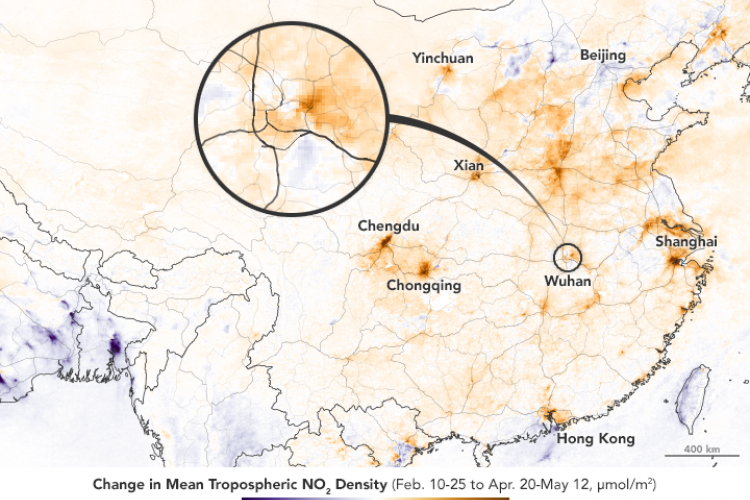The Air's As Bad Inside As Outside in 90 Percent of Beijing's Offices
Ninety percent of Beijing’s office buildings are not achieving substantial reductions of pollutants on bad air days, according to a recent study conducted by multinational real estate giant JLL and China-based indoor environmental consultants Pure Living.
And some even had significantly worse air on those days.
While we all freak out and mask up about outdoor air (and many of us go to great lengths to protect the air in our homes), air in the workplace is often an afterthought – and often out of ones’ personal control.
But there’s several good reasons why indoor air at your place of work – be it an office, a retail shop, a hotel, a restaurant or a classroom – should be the next item on your agenda to freak out about:
- The average person in China spends a estimated 87 percent of their time indoors. Presuming you are gainfully employed and work in an indoor space, you spend massive portion of that time in your place of work;
- An estimated 82 percent of the airborne particulate matter you inhale is inhaled while you are indoors, while only 18 percent comes from outdoor exposure;
- Many people intuitively believe being inside offers a modicum of protection, when in reality the air inside can be as bad or even worse than outside;
- And for business owners (and drowsy employees), there is a proven link between fresh air and worker productivity.
This last bit is of particular interest as it give employers a financial incentive to invest more in assuring workplace air quality.
“Employers who provide clean air at work are sending a clear message to staff: They care about their well-being,” said Louie Cheng, President of PureLiving China and co-author of the report.
To reach their conclusion, the authors of the survey conducted tests in 200 office buildings in Beijing. While a small fraction of the best were able to see reductions of up to 80 percent of exterior pollutants, some even had worse air indoors than outdoors.
Only 11 percent of Beijing's offices were able to reduce PM 2.5 by 61 percent or more on days when the outdoor air featured significant levels of pollution. On the flip side, 4 percent of buildings had indoor air was more than 40 percent worse than the outdoor air.

How is that even possible? We asked Raefer Wallis, founder and CEO of GIGA, a Shanghai-based resource for healthy building standards, including building materials and air quality monitoring.
"Take hotels as an example: PM 2.5 gets introduced by the fresh air system and leaky windows – usually about 75 percent of what's outside," Wallis said. "Then, the particulates get trapped in the carpet, the bedsheets, the sofa, the wallpaper ... Hotels are havens. It all gets kicked back up with users inside."
And that's not even mentioning things like carbon dioxide and volatile organic compounds (VOCs), emitted by common household items like particleboard, carpet glue and even your computer. "VOCs and CO2 can reach much higher concentrations indoors," Wallis said. "So the indoor cocktail of pollutants is worse than the outdoor cocktail. Pick which hangover you prefer."
Then there is the problem of the building management not taking care of the complex air circulation systems that typically draw air from rooftop units and into the building via a series of ducts.
Cheng, a veteran of hundreds of visits to buildings in Beijing and Shanghai, had seen just about everything.
“It’s very common to see places that claim to change their filters every three months, and when we go in to check, it looks like someone’s sweater – literally it’s caked-on filth,” said Cheng.
In other cases, facilities overcompensate and replace filters with the wrong specifications, resulting in too much air resistance, Cheng says. This causes the systems to not be able to move the air, and thus get less than half the performance.
Then of course there are those that don’t bother with filters at all.
“We’ve seen where fresh air filters have been completely removed because someone has believed the more important thing to do is to get fresh air into the building. So instead of maintaining the system and changing the filters, they just pull them out. By doing this you remove the resistance and you are simply pulling outdoor polluted air directly into the airspace.”
JLL's report says that bad office air results in employees feeling unwell, reduced efficiency, increased absenteeism, and sheer distraction as employees become obsessed with air worries. This all can lead to rapid employee turnover, an enormous cost to companies.
Some multinationals are already starting to feel pressure from employees who care as much about the health of the office environment as they do about salaries.
Even if wildly successful, China’s efforts to resolve the smog problem will take years, if not decades, so don’t sit back and wait for things to change.
So given you can't control the environment, the only solution is to put pressure on your employer. The solutions can be cost effective when you measure the likely return in employee satisfaction/retention vs the cost of air remediation, the report says.
A link to the full report can be found here.
Images: JLL / Pure Living







